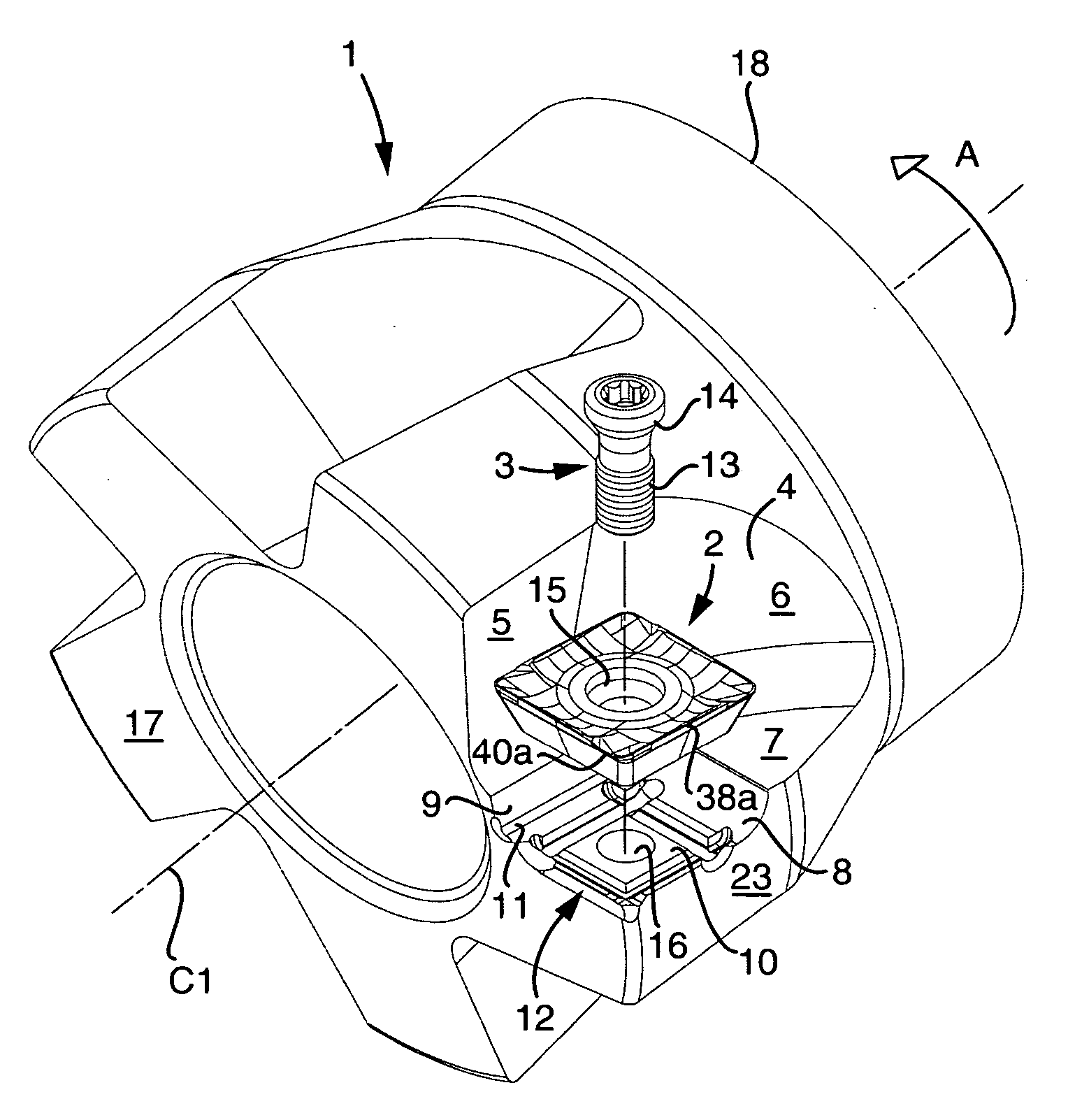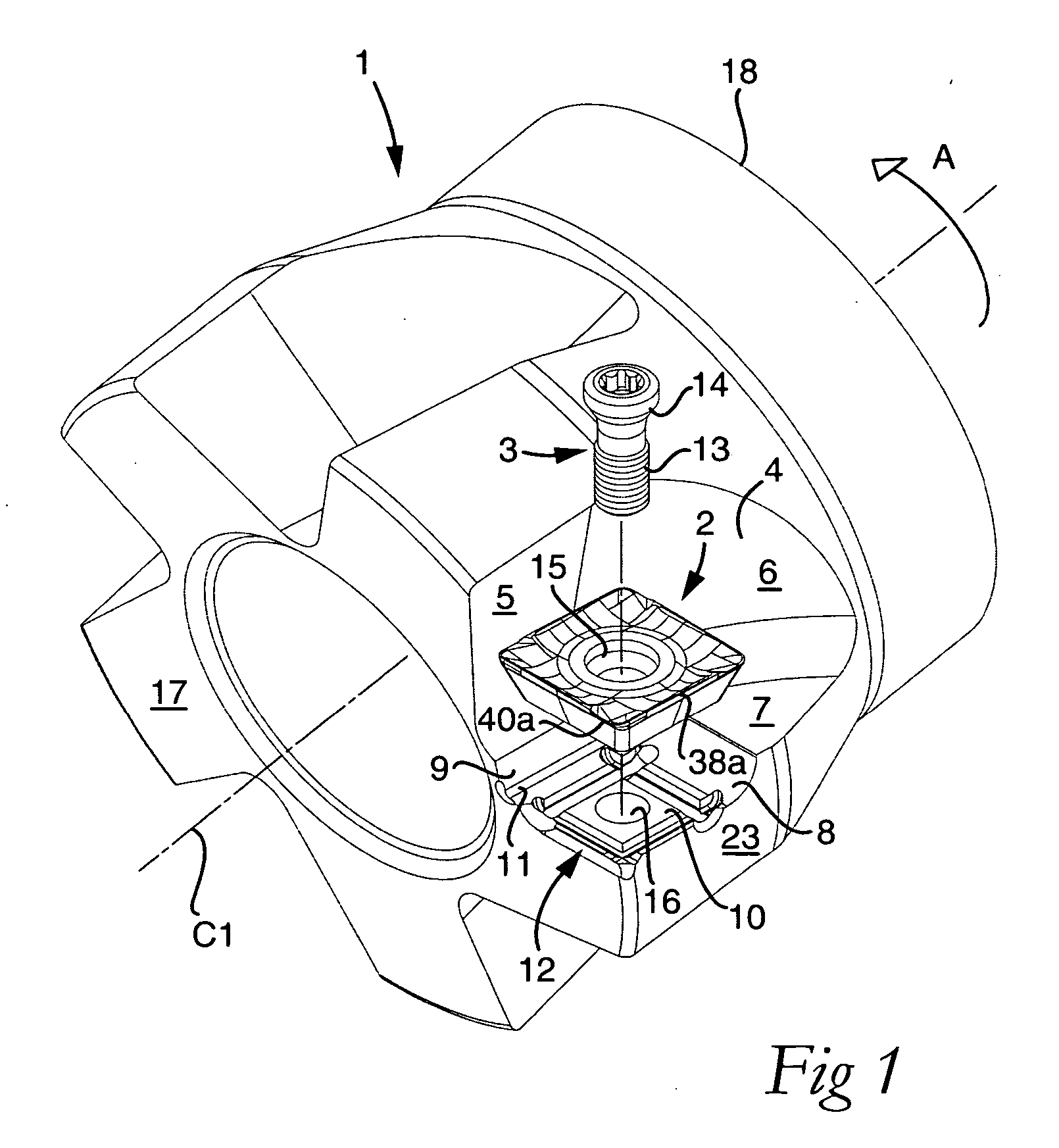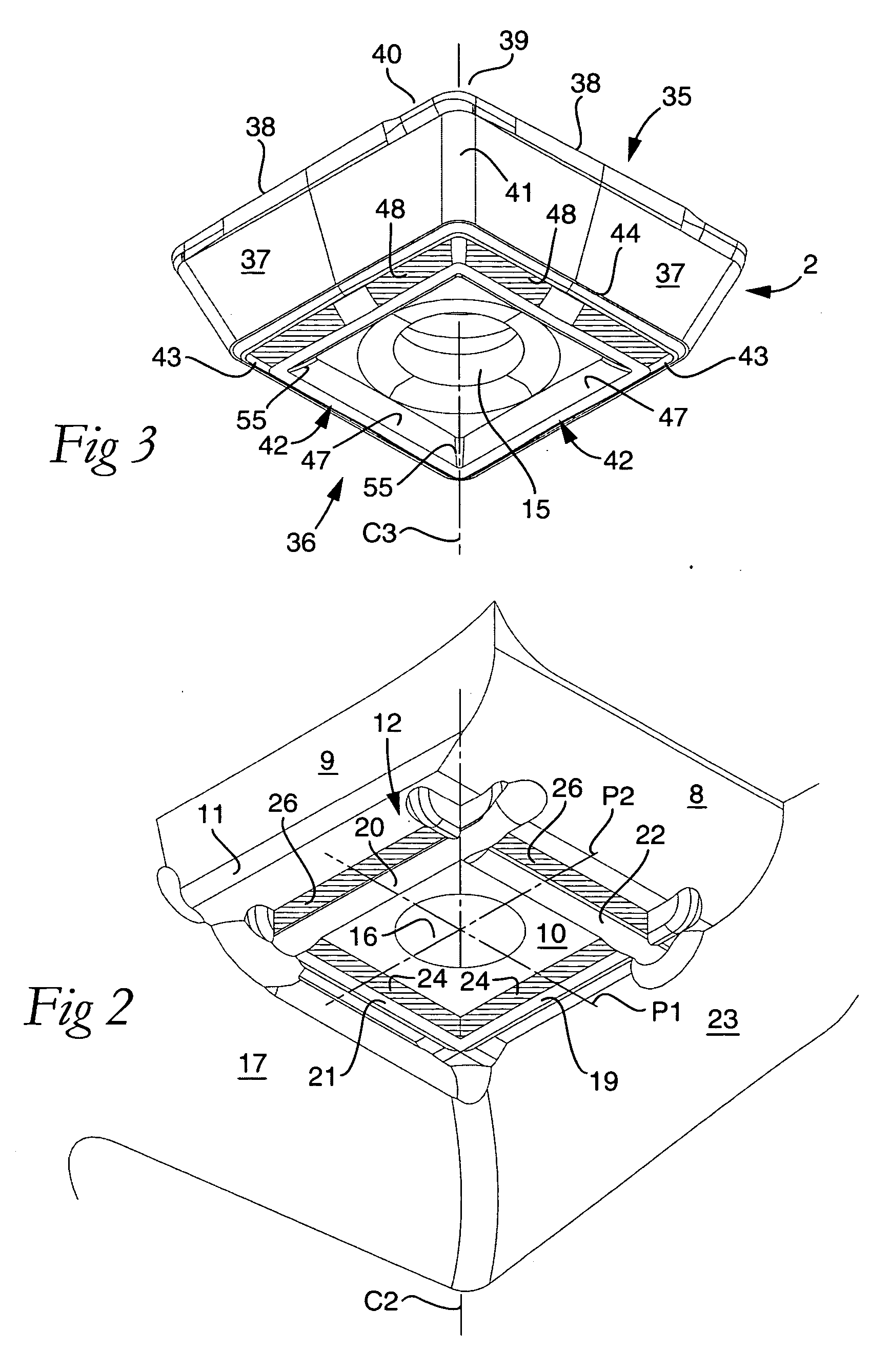Tool and a cutting insert for chip removing machining
a technology for removing tools and cutting inserts, which is applied in the direction of manufacturing tools, turning machine accessories, shaping cutters, etc., can solve the problems of extreme position precision requirements, catastrophic edge position precision, and unsatisfactory machining precision, so as to simplify and cheapen the manufacture
- Summary
- Abstract
- Description
- Claims
- Application Information
AI Technical Summary
Benefits of technology
Problems solved by technology
Method used
Image
Examples
Embodiment Construction
[0041] Before the invention is described closer, reference being made to the appended drawings, the implication of certain concepts, used to define the features that characterize the invention, are briefly elucidated below.
[0042]“Connecting surfaces” are two mating surfaces that form an interface between the basic body and cutting insert of the tool, one of which is included in an underside of the cutting insert, and the other one of which is formed in the basic body.
[0043]“Chip surface” is the surface that forms the topside of the cutting insert, and which in flat cutting inserts is generally parallel to the underside. The chip surface as such does not need to be planar, but has most often an irregular topography. In connection with the invention, the chip surface is incidental.
[0044]“Clearance surface” is the surface that extends between the topside and the underside of the cutting insert. When the cutting insert has a positive geometry, the clearance surface forms an acute ang...
PUM
| Property | Measurement | Unit |
|---|---|---|
| Fraction | aaaaa | aaaaa |
| Angle | aaaaa | aaaaa |
| Thickness | aaaaa | aaaaa |
Abstract
Description
Claims
Application Information
 Login to View More
Login to View More - R&D
- Intellectual Property
- Life Sciences
- Materials
- Tech Scout
- Unparalleled Data Quality
- Higher Quality Content
- 60% Fewer Hallucinations
Browse by: Latest US Patents, China's latest patents, Technical Efficacy Thesaurus, Application Domain, Technology Topic, Popular Technical Reports.
© 2025 PatSnap. All rights reserved.Legal|Privacy policy|Modern Slavery Act Transparency Statement|Sitemap|About US| Contact US: help@patsnap.com



